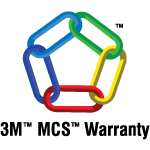When & Where to Display
Discover the essential requirements for US DOT numbers and where to display them on your commercial vehicles. Ensure compliance and avoid penalties with our comprehensive guide.
Navigating the regulations for commercial vehicles can be tricky, but knowing when and where to display US DOT numbers is crucial for compliance and avoiding penalties. In this article, we’ll explore when you need US DOT numbers and how to display them correctly on your vehicles.
When are US DOT Numbers Required?
Interstate Commerce:
Any commercial vehicle operating in interstate commerce—meaning it travels between states or countries—must have a US DOT number. This includes vehicles transporting goods or passengers across state lines.
Vehicle Specifications:
Commercial vehicles that meet any of the following criteria must display a US DOT number:
- Vehicles with a gross vehicle weight rating (GVWR) or gross combination weight rating (GCWR) of 10,001 pounds or more.
- Vehicles designed or used to transport more than 8 passengers (including the driver) for compensation.
- Vehicles designed or used to transport more than 15 passengers (including the driver) not for compensation.
- Vehicles used to transport hazardous materials in quantities requiring placards.
Intrastate Commerce:
Some states require US DOT numbers for intrastate commercial vehicles. It’s important to check specific state regulations to determine if your intrastate operations necessitate a US DOT number.
Where to Display Your US DOT Number
Placement on the Vehicle:
You must display the US DOT number on both sides of the commercial vehicle. It should be easily visible and legible from at least 50 feet away during daylight hours while the vehicle is stationary.
Lettering Specifications:
- Size:The letters and numbers must be at least 2 inches tall.
- Color:The color of the DOT number should contrast sharply with the background color of the vehicle, ensuring high visibility.
- Font:The font should be plain and simple, such as Arial or Helvetica, to ensure clarity.
Additional Information:
In addition to the US DOT number, you must also display the legal name or a single trade name of the motor carrier operating the vehicle. Ensure you display this name clearly, making it legible from the required distance.

Ensuring Compliance
Regular Inspections:
Regularly inspect your fleet to ensure that you are displaying US DOT numbers and any other required information correctly and maintaining legibility. Because wear and tear can compromise visibility, it’s critical to conduct periodic checks. These inspections not only help you adhere to regulations but also prevent potential fines and disruptions caused by non-compliance.
Training for Drivers:
Make sure your drivers understand the importance of US DOT numbers and how to display them properly. Conducting regular training sessions can significantly reduce the risk of unintentional non-compliance. This training will equip your drivers with the knowledge they need to meet regulatory standards and operate within legal requirements, ensuring that every vehicle in your fleet represents your commitment to safety and compliance.
Stay Updated on Regulations:
Regulations can change, so it’s important to stay informed about any updates to US DOT number requirements and display rules. Regularly review FMCSA guidelines and state-specific regulations to ensure ongoing compliance.
Conclusion
Understanding when and where to display US DOT numbers is crucial for maintaining compliance with federal and state regulations. Displaying these numbers correctly helps you avoid fines and legal issues, ensuring that your commercial operations run smoothly. By adhering to guidelines for placement and visibility, and staying informed about regulatory changes, you can keep your fleet compliant and operational.
Furthermore, if you encounter any challenges with US DOT number compliance or other regulatory requirements, don’t hesitate to reach out for assistance. We’re here to support you in keeping your fleet running smoothly and legally. This proactive approach not only safeguards your operations but also enhances the efficiency and reliability of your business.
FAQs

We proudly use 3MTM graphic films and overlaminates.
